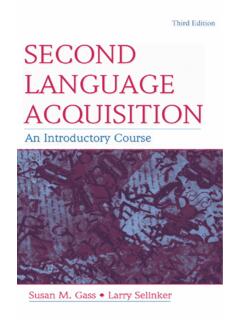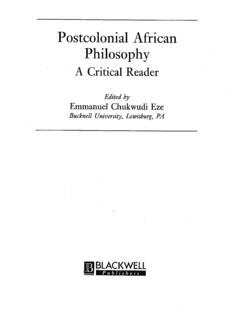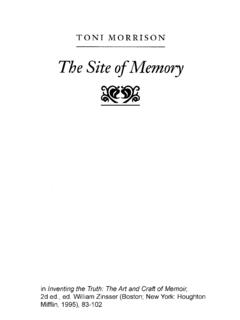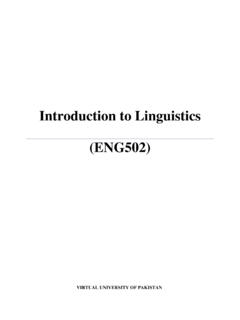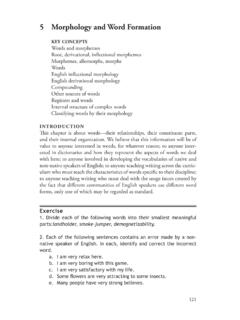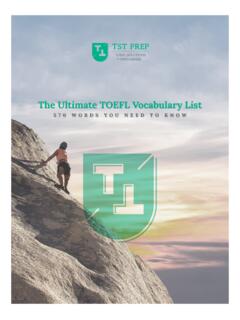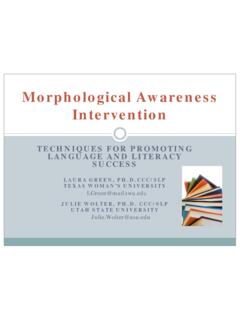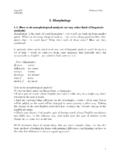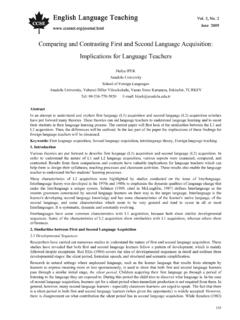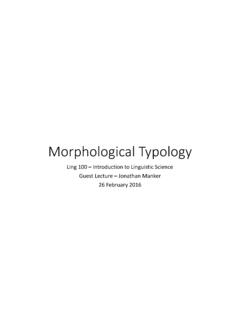Transcription of Inflectional vs. Derivational Morphemes
1 Inflectional vs. Derivational Morphemes Handout Ling 201 Inflectional An Inflectional morpheme is added to a noun, verb, adjective or adverb to assign a particular grammatical property to that word such as: tense, number, possession, or comparison. Examples of Inflectional Morphemes are: o Plural: -s, -z, -iz Like in: cats, horses, dogs o Tense: -d, -t, -id, -ing Like in: stopped, running, stirred, waited o Possession: - s Like in: Alex s o Comparison: -er, -en Like in: greater, heighten *note that er is also a Derivational morpheme so don t mix them up!! These do do not change the essential meaning or the grammatical category of a word. Adjectives stay adjectives, nouns remain nouns, and verbs stay verbs. In English, all Inflectional Morphemes are suffixes ( they all only attach to the end of words).
2 There can only be one Inflectional morpheme per word Derivational Derivational Morphemes tend to change the grammatical category of a word but not always! There can be multiple Derivational Morphemes per word and they can be prefixes, affixes, or suffixes. For example, the word transformation contains two Derivational Morphemes : trans (prefix) -form (root) -ation (suffix) Some examples of Derivational Morphemes are: o -ful like in beautiful => beauty (N) + ful (A) = beautiful (A) o -able like in moldable => mold (V) + able (A) = moldable (A) o -er like in singer => sing (V) + er (N) = singer (N) o -nes like in happiness => happy (A) + nes (N) = happiness (N) o -ify like in classify => class (N) + ify (V) = classify (V) Determining Derivational vs.
3 Inflectional Morphemes Derivational If it changes the part of speech, it must be Derivational . If it is at the beginning of a word, it must be Derivational Inflectional vs. Derivational Morphemes Handout Ling 201 If it is followed by one of the Inflectional Morphemes listed above, it must be Derivational . If there is an Inflectional morpheme, then every other morpheme must be Derivational (since only one Inflectional morpheme is allowed per word). Inflectional If it adds a particular grammatical property like tense, number, possession, or comparison, it must be Inflectional This is related to productivity: if it is adding a grammatical property, it is productive.
